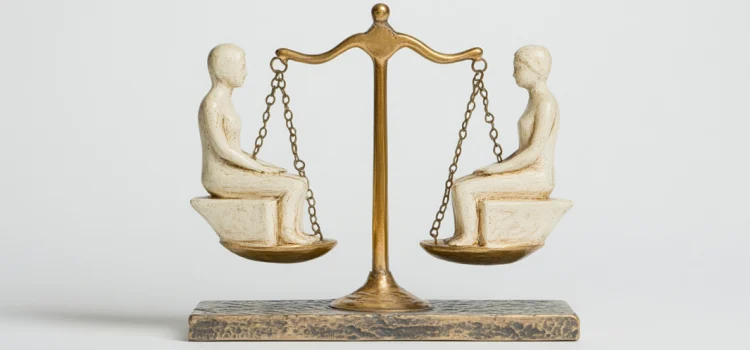

This article is an excerpt from the Shortform book guide to "The Pumpkin Plan" by Mike Michalowicz. Shortform has the world's best summaries and analyses of books you should be reading.
Like this article? Sign up for a free trial here.
Why is it important to rank customers? Is there such a thing as a bad customer?
Mike Michalowicz says it’s important to conduct a customer ranking because their rank will determine how you should treat them to ensure your company’s success. The more valuable the customer, the more you’ll prioritize their needs and desires.
Let’s explore what makes a customer valuable and the categories of value your customers can fall into.
What Makes a Customer Valuable
To oversee a customer ranking, you need to know what makes a customer valuable. We’ve consolidated Michalowicz’s definition of a valuable customer into three metrics:
1. Similar worldview. Valuable customers get along with you well because they have a similar set of rules that they approach life (and business) with. Michalowicz calls these “immutable laws,” as they’re extremely influential and never change. It’s easy and enjoyable to work with people who have similar worldviews, as you’re more likely to want the same things and understand each other. In contrast, you’re more likely to experience misunderstandings and conflict with people who don’t share your rules. You may also feel pressured to change the way you operate—to break your unchangeable rules—to accommodate them. This then leads to internal conflict and unhappiness.
For example, if part of your worldview is “Always take responsibility for your actions,” you wouldn’t work well with people who are focused on protecting themselves from criticism. It would be frustrating to work with them, and they may take advantage of you by blaming you for anything that goes wrong, not just the things you’re actually responsible for. You might then feel tempted to act defensively and refuse to take responsibility at all, contradicting your own worldview and causing internal conflict and unhappiness.
2. Financially trustworthy. Valuable customers use your services regularly, pay their bills on time, and are likely to generate future revenue.
3. Cooperative. Valuable customers maintain good communication and are willing to work with you to resolve any mistakes instead of holding a grudge.
How to Rank Customers
Michalowicz uses a letter-grade system when ranking customers. We’ve divided it into four categories your customers could fall into, and describe how you should respond to each:
1. Most valuable. These customers are almost perfectly aligned with you in all three metrics. You’ll focus on catering to this small, elite group with every decision you make, as they’re the most likely to bring you future revenue and help you succeed. (We’ll discuss how to do this in Step #3.)
(Shortform note: How small and elite is this most valuable group? Some business experts say it may be less than 1% of your customer base, as studies show that 1% of customers can drive as much as 90% of a company’s overall revenue. These experts recommend surveying these customers to understand why they became so valuable—which the experts define by financial trustworthiness, excluding the less tangible metrics Michalowicz discusses. They also recommend using personalization engines to cater to each customer even more closely.)
2. Valuable. These customers are mostly aligned with you, with only minor differences, and they make up the majority of your customer base. You won’t focus on catering to this group, since you don’t want to diffuse your attention too much, but the decisions you make to benefit your most valuable customers will usually benefit them too.
(Shortform note: In Superfans, Pat Flynn describes “connected customers,” a group that roughly aligns with our valuable category. Flynn focuses on customers’ buying habits and marketing value more than Michalowicz, defining connected customers as people who regularly buy your products or services, trust your brand, and actively communicate with other customers. Flynn says this group isn’t the majority of your customer base. However, it does affect the size and value of your customer base, as this group builds a vibrant community that encourages other people to become connected customers—thus increasing their value. Help them build this community by coordinating live events and giving your customer base a name.)
3. Mediocre. These customers are aligned in some ways, and they don’t harm your company, so you don’t need to fire them right away. However, they’re not particularly helpful to your success, either, so you’ll try to gradually replace them with more valuable customers.
(Shortform note: One reason you may tolerate mediocre customers until you identify more valuable ones is the desire to boost profit. One study shows that you can increase profits by tolerating some bad behavior—or misalignments, in Michalowicz’s framing—if there’s a net benefit for your business. For example, a customer who tries to return a sweater after the return period is violating your policy—and may not align with your responsibility-first worldview—but if you allow the return and that customer goes on to buy three jackets and a pair of pants, your company ultimately makes more money.)
4. Bad. These customers aren’t aligned with you. They drain resources and stop you from succeeding. You’ll fire them immediately to minimize the damage they cause. (We’ll discuss firing bad customers in more detail in the next section).
(Shortform note: Some business experts add that you should fire customers who are hostile to your employees—for instance, by using insults or racial slurs. Firing them both removes their negative influence and can boost morale, as your employees see that you prioritize their well-being over a sale. You shouldn’t cut ties completely, however. If customers change their behavior, they may become more valuable.)

———End of Preview———
Like what you just read? Read the rest of the world's best book summary and analysis of Mike Michalowicz's "The Pumpkin Plan" at Shortform.
Here's what you'll find in our full The Pumpkin Plan summary:
- Why you’re struggling as an entrepreneur
- What business leaders can learn from prize-winning pumpkin farmers
- The power of focusing on quality rather than quantity






